John Adam Estes
b. January 25th, 1899 in Ripley (Tennessee)
d. June 5th, 1977 in Brownsville (Tennessee)
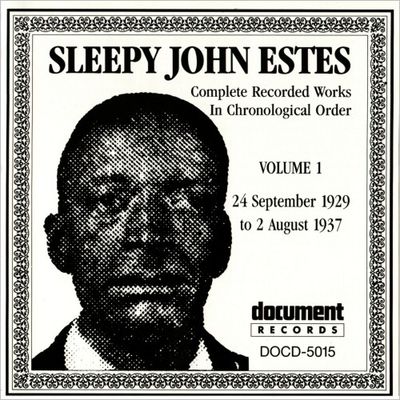
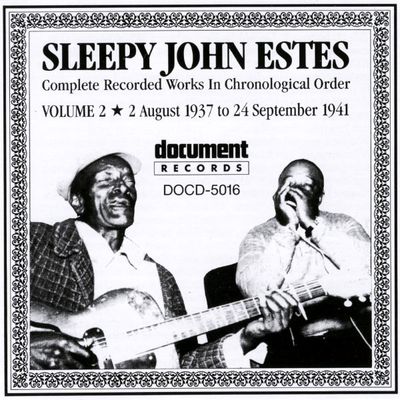
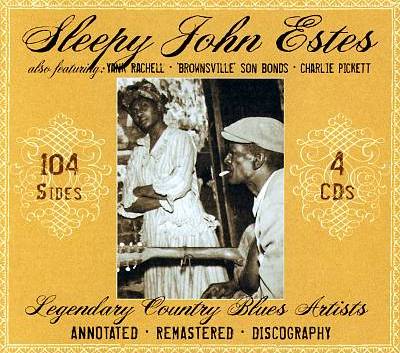
COMPLETE RECORDED WORKS
Document
Volume 1 (September 1929 - August 1937)
Volume 2 (August 1937 - September 1941)
LEGENDARY COUNTRY BLUES ARTISTS
JSP
September 1929 - September 1941
Originaire du Tennessee, John Adam Estes vient au monde dans une famille composée de dix frères et soeurs. Son père Daniel est métayer et guitariste et joue fréquemment avec son fils. A la suite d'un accident en jouant au base-ball, John est blessé à l'oeil droit pendant son enfance. Apparaissant, dès lors, avec l'oeil mi-fermé qui lui donne l'air d'être endormi, on le surnomme "Sleepy" John. En 1915, la famille s'installe à Brownsville ou John vivra toute sa vie. Dans cette ville, il rencontre James "Yank" Rachell (guitariste et mandoliniste) avec lequel il s'associe. Ensemble, ils jouent lors de piques-niques et fêtes locales. Une autre rencontre déterminante sera celle d'Hammie Nixon, un harmoniciste local, en 1924. Dans la seconde moitié des années 20, Estes, Rachell et Jab Jones (piano et jug) forment le Three J's Jug Band et tournent dans les alentours de Memphis ou les jug-bands sont alors à la mode. Quand la firme Victor envoie une unité mobile d'enregistrement à Memphis en septembre 1929, John et ses amis gravent une poignée de titres dont les magnifiques "Broken hearted ragged and dirty too" et "Divin' duck blues". Une autre séance, quelques mois plus tard, verra la création de sommets comme "Milk cow blues" et "Whatcha doin'". A la recherche d'engagements plus nombreux en cette époque de dépression économique, John et Hammie Nixon rejoignent Chicago en 1931. Mais, les temps sont durs et les deux musiciens, toujours actifs, doivent attendre juillet 1935 pour graver quelques nouveaux titres pour le label Champion (appartenant à Decca). Au sommet de son inspiration, John enregistre plusieurs chefs d'oeuvre qui constituent son zénith artistique ("Down south", "Stop that thing" et, bien sûr, "Someday baby blues") : voix ultra-expressive semblant pleurer, jeu de guitare syncopé et vivant constamment en interaction avec un harmonica gémissant et omniprésent. Un modèle de duo guitare/harmonica est né. Malgré ces merveilles, John reste encore éloigné des studios pendant de longs mois. En aout 1937 et avril 1938, accompagné de Nixon (harmonica), son cousin Charlie Pickett (guitare), Son Bonds (guitare), Lee Brown (kazoo), John grave encore quelques superbes titres ("Vernita blues", "Floating bridge", "Hobo jungle blues", "Liquid store blues", "Everybody oughta make a change") pour Decca à New York. De retour à Chicago en 1940, il s'associera avec le guitariste Robert Lee Mac Coy (alias Robert Nighthawk) de nouveau pour le compte de Decca, puis l'année suivante, retrouvant Son Bonds, pour une poignée de titres chez Bluebird (ou il retrouve le son de ses premières années). Après une dernière séance en septembre 1941, John regagne Brownsville et se marie avec Ola (qui lui donnera quatre enfants). Les deux volumes proposés par Document sont, évidemment, des indispensables avec une qualité sonore très correcte. Le coffret JSP peut également être un bon choix dans la mesure ou il reprend l'oeuvre d'Estes mais aussi de tous ses comparses Yank Rachell, Son Bonds et Charlie Pickett. Malgré une présentation économique, il s'agit également d'un excellent choix.
Originally from Tennessee, John Adam Estes is born in a family of ten brothers and sisters. His father Daniel is a sharecropper and guitarist and frequently plays with his son. Following an accident playing baseball, John was wounded in the right eye during his childhood. Appears, therefore, with an half-closed eye, which gives him the appearance of being asleep, he is nicknamed "Sleepy" John. In 1915, the family moved to Brownsville where John live all his life. In this city he met James "Yank" Rachell (guitarist-mandolinist) with which he is associated. Together, they play at picnics and local parties. Another decisive meeting will be Hammie Nixon, a local harmonicist, in 1924. During the second half of the 20's, Estes, Rachell and Jab Jones (piano and jug) form the Three J's Jug Band and tour around in Memphis where jug-bands are then in vogue. When the Victor company sends a mobile recording unit to Memphis in september 1929, John and his friends cut a handful of titles including the beautiful "Broken hearted ragged and dirty too" and "Divin' duck blues". Another session, a few months later, will see the creation of beautiful tracks like "Milk cow blues" and "Whatcha doin'". Seeking more engagements in this time of economic depression, John and Hammie Nixon joined Chicago in 1931. But times are tough and the two musicians, still active, must wait july 1935 to cut some new tracks for the Champion label (owned by Decca). At the top of his inspiration, John recorded several masterpieces that comprise his artistic zenith ("Down south", "Stop that thing" and, of course, "Someday baby blues") : ultra- expressive voice which seems crying, syncopated guitar and with constant interactions with a wailing and omnipresent harmonica. a model guitar/harmonica duo was born. Despite these wonders, John stays still far from the studios for months. In august 1937 and april 1938, accompanied by Nixon (harmonica), his cousin Charlie Pickett (guitar), Son Bonds (guitar), Lee Brown (kazoo), John cut some great tracks ("Vernita blues", "Floating bridge", "Hobo jungle blues", "Liquid store blues", "Everybody oughta make a change") for Decca in New York. Back to Chicago in 1940, he will join forces with guitarist Robert Lee McCoy (aka Robert Nighthawk ) again on behalf of Decca, and the following year, with Son Bonds, for a handful of titles in Bluebird (where he creates again the sound of his early years). After a final session in september 1941, John returned to Brownsville and married Ola (which would give him four children). The two Document volumes are obviously essential with a very decent sound quality. JSP box-set can also be a good choice as it shows the work of Estes but also of all his friends Yank Rachell, Charlie Pickett and Son Bonds. Despite an economic presentation, it is also an excellent choice.
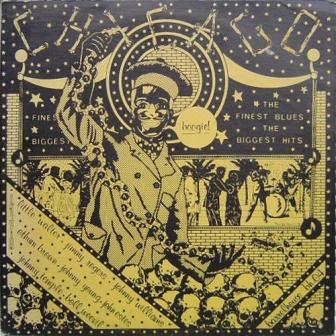
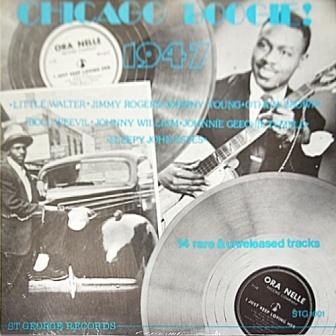
CHICAGO BLUES
Barrelhouse
P-Vine
CHICAGO BOOGIE 1947
St George
1948
En 1948, John et son inséparable ami Hammie Nixon retrouvent Chicago et gravent deux morceaux pour le label Ora-Nelle de Bernard Abrams. Malheureusement, ces morceaux resteront inédits de longues années. Il faudra attendre l'année 1974 et la parution du LP "Chicago boogie" chez Barrelhouse pour les découvrir (en particulier le magnifique "Stone blind").
In 1948, John and his inseparable friend Hammie Nixon went to Chicago and cut two songs for the Ora-Nelle label, a label managed by Bernard Abrams. Unfortunately, these tracks remain unreleased for many years. It was not until 1974 and the release of "Chicago boogie" LP in Barrelhouse to discover them (especially the beautiful "Stone blind").
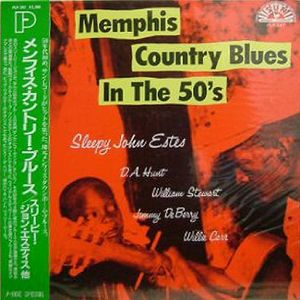

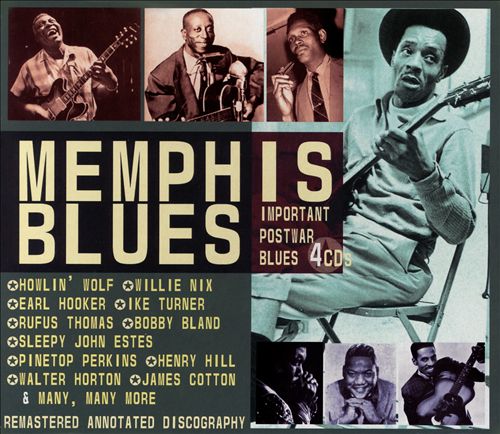
MEMPHIS COUNTRY BLUES IN THE 50'S
P-Vine
SUN RECORDS : THE BLUES YEARS 1950-1958
Charly
MEMPHIS BLUES
JSP
April 1952
Vers 1949-50, John Estes perd totalement la vue. Toujours actif musicalement mais désormais cantonné à sa région de Brownsville - Memphis (il se produit souvent au Handy Park), il est remarqué par Sam Phillips. John participe, alors, à deux séances en avril 1952 à Memphis qui aboutiront à une poignée de morceaux. Le résultat de celles-ci reste inédit de longues années. Un morceau apparaitra en 1977 dans le recueil "Sun, the roots of rock vol.1 : catalyst" (Charly) et la séance complète sera finalement publiée en 1987 sur un rare microsillon japonais ("Memphis country blues in the 50's"). Au-delà de ces microsillons, on peut trouver les 4 titres dans le coûteux coffret "Sun records : the blues years 1950-58" et seulement 3 d'entre eux dans coffret JSP "Memphis blues". Cependant, du point de vue artistique, on ne retrouve pas la verve et l'inspiration de ses titres précédents à l'exception de "Rats in my kitchen".
Around 1949-50, John Estes became totally blind. Always active musically but now confined to the Brownsville - Memphis area (he often plays at Handy Park), he was noticed by Sam Phillips. John participates, then, at two sessions in april 1952 in Memphis that will result in a handful of tracks. The result of those sessions remains unpublished for many years. One of these tracks will appear in 1977 in "Sun, the roots of rock vol.1 : catalyst" (Charly) and the full session will finally be published in 1987 on a rare japanese LP ("Memphis country blues in the 50's"). Beyond these LPs, we can find the 4 tracks in the expensive box-set "Sun records : the blues years 1950-1958" and only 3 of them in JSP box-set "Memphis blues". However, from an artistic point of view, we do not find the verve and inspiration of his previous titles except maybe in "Rats in my kitchen".
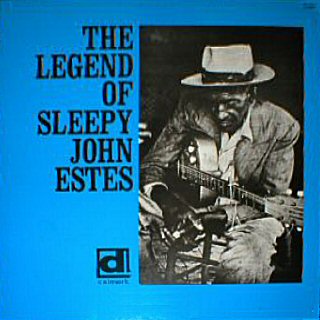
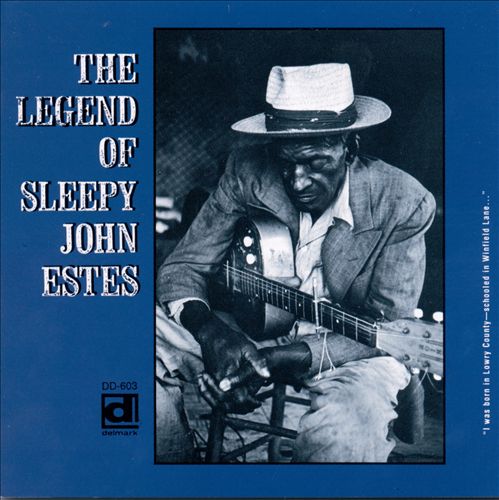
THE LEGEND OF SLEEPY JOHN ESTES
Delmark
March - June 1962
"Sleepy" John Estes - vivant alors dans un dénuement total - est retrouvé par hasard par le photographe David Blumenthal qui prépare, à cette époque, un documentaire dans la région. Blumenthal alerte Robert Koester qui part à sa rencontre à Brownsville et lui propose de se produire dans quelques universités de la région de Chicago. Ses prestations gorgées de feeling séduisent le jeune public présent. Koester lui propose également d'enregistrer à nouveau. Mais, John ne veut retourner en studio qu'avec son fidèle ami Hammie Nixon. Il part, donc, le chercher pour le ramener à Chicago. Koester entoure les deux hommes d'Ed Wilkinson (basse) et de John "Knocky" Parker (piano). Après dix ans sans entrer dans un studio, John livre une belle prestation reprenant ses vieux classiques avec flamme et inspiration ("Stop that thing", "Divin' duck blues", "Married woman blues", "Milk cow blues", "I'd been well warned"). Toutefois, l'ensemble ne se hisse pas au niveau de ses enregistrements d'avant-guerre mais reste parfaitement exécuté. Cet album demeure, en tous les cas, un disque historique sur le retour d'un très grand bluesman.
"Sleepy" John Estes - living then in utter destitution - was found by chance by photographer David Blumenthal, preparing at that time a documentary in the region. Blumenthal alert Robert Koester who goes to meet him at Brownsville and offers to play in a few universities in the Chicago area. His performances full of feeling seduce the young audience. Koester also offers him to record again. But, John does not want to return to the studio without his faithful friend Hammie Nixon. He brings him back to Chicago. Koester surrounds the two men with Ed Wilkinson (bass) and John "Knocky" Parker (piano). After ten years without going into a studio , John delivers a great performance covering his old classics with flame and inspiration ("Stop that thing", "Divin' duck blues", "Married woman blues", "Milk cow blues", "I'd been well warned"). However, this album is not as excellent as his pre-war recordings but is perfectly executed. In any case, this album remains a historical record of the come-back of a great bluesman.
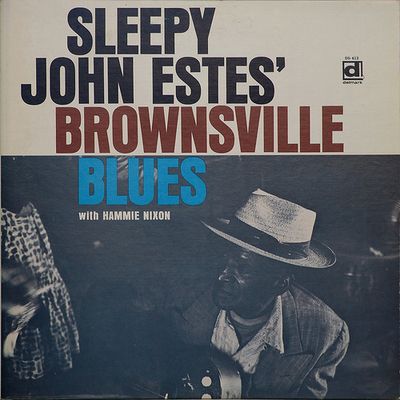
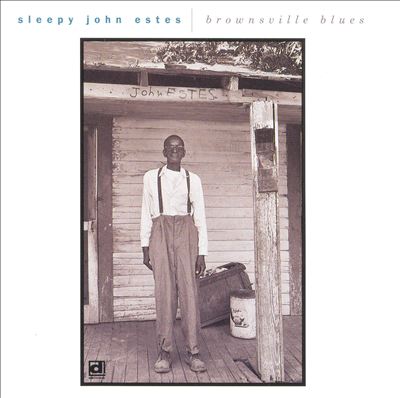
BROWNSVILLE BLUES
Delmark
March 1962 - February 1965
On retrouve diverses séances dans ce disque (certaines issues des sessions de "The legend of Sleepy John Estes") étalées entre 1962, 1964 et 1965. Souvent seul à la guitare, John n'est rejoint que sur cinq titres (certains avec Hammie Nixon, d'autres avec Yank Rachell) sur un total de dix-huit dans la version CD. On remarque, plus particulièrement, "38 pistol", "City hall blues", "Government Money", "Drop down mama", "Young lawyer". Un disque plutôt plaisant. La version CD possède six titres bonus.
There are various sessions in this album (some sessions from "The legend of Sleepy John Estes") spread between 1962, 1964 and 1965. Often alone on guitar, John is joined on five titles (some with Hammie Nixon, others with Yank Rachell) on a total of eighteen in the CD version. We note, in particular, "38 pistol", "City hall blues", "Government Money", "Drop down mama", "Young lawyer". A rather pleasant album. The CD version has six bonus tracks.
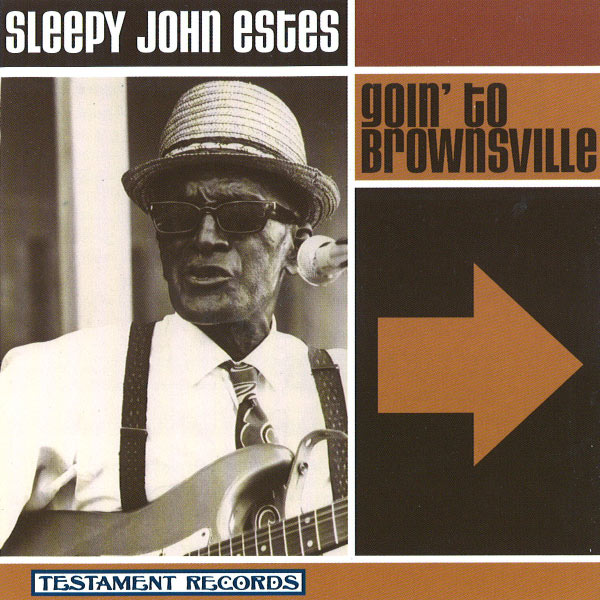
GOIN' TO BROWNSVILLE
Testament
April 1962
Sur ce disque sont recueillis plusieurs morceaux provenant de deux séances d'avril 1962 organisées par Pete Welding à Chicago. Ces inédits ne furent publiés qu'en 1998 par Testament. On trouve "Sleepy" John Estes en bonne forme, seul à la guitare sur l'ensemble des faces. Le disque est partagé entre reprises de ses vieux standards et de nouvelles compositions comme "Lost my eyesight" et "Freedom loan". Au final, une production intéressante qui vaut aussi pour la longue interview de John retraçant quelques moments importants de sa carrière.
On this CD are collected several sides from two april 1962 sessions organized by Pete Welding in Chicago. These unissued tracks were not published until 1998 by Testament. "Sleepy" John Estes is in good condition, alone on guitar on all sides. The album is shared between his old standards and new compositions like "Lost my eyesight" and "Freedom loan". Finally, an interesting production that is also worthy for the long interview with John retracing some important moments of his career.
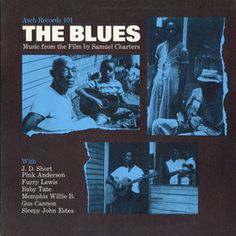
THE BLUES
Asch
Folkways
July 1962
"Sleepy" John Estes figure sur un morceau ("Lonesome ground") de cette anthologie consacrée au célèbre film documentaire "The Blues" réalisé par Sam Charters.
"Sleepy" John Estes is present on one track ("Lonesome ground") in this anthology dedicated to the famous documentary film "The Blues" by Sam Charters.
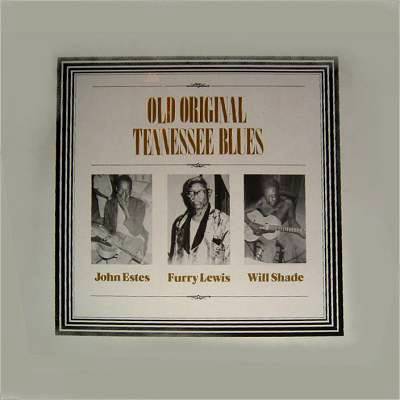

OLD ORIGINAL TENNESSEE BLUES
Revival
TENNESSEE LEGENDS
Southland
THE GEORGE MITCHELL COLLECTION vol.9
Fat Possum
Summer 1962
L'ethnomusicologue George Mitchell a aussi enregistré sporadiquement "Sleepy" John Estes pendant l'été 1962 même si cette date semble sujette à caution (il y a peut-être eu plusieurs séances). La poignée de titres mis en boite lors de ses séances est restée très méconnue par rapport à sa production chez Delmark de la même époque. Pourtant, ces morceaux sont excellents ("Special agent" et "Trying to see") et mériteraient une meilleure exposition.
Ethnomusicologist George Mitchell also recorded sporadically "Sleepy" John Estes during the summer of 1962 although this date seems questionable (he may have had several sessions). The handful of titles cut during these sessions remained little known compared to his Delmark production of the same time. However, these tracks are excellent ("Special agent" and "Trying to see") and deserve better exposure.
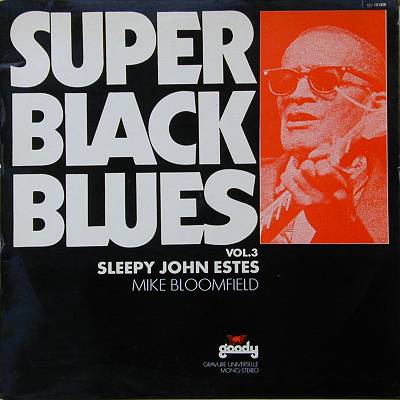
BROKE AND HUNGRY
Delmark
SUPER BLACK BLUES vol.3
Goody
March 1964
Toujours flanqué de ses inséparables acolytes Hammie Nixon et Yank Rachell, John s'associe pour ce disque avec le jeune guitariste Mike Bloomfield qui démarre juste sa carrière à ce moment là. La voix d'Estes semble s'être affaiblie et son expressivité aussi. Un disque relativement intéressant, possédant de bons moments, mais restant globalement inégal. Il y a 2 titres en bonus dans la version CD.
Always backed by his inseparable pals Hammie Nixon and Yank Rachell, John is associated for this album with young guitarist Mike Bloomfield who just started his career at that time. Estes' voice seems to have weakened and expressiveness as well. A relatively good record, with good moments, but overall still uneven. There are two bonus tracks on the CD version.


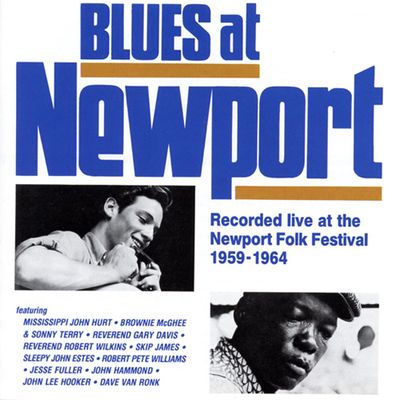

THE BLUES AT NEWPORT 1964 vol.1
THE GREAT BLUESMEN AT NEWPORT
BLUES AT NEWPORT
NEWPORT FOLK FESTIVAL 1964 : EVENING CONCERT vol.1
Vanguard
July 1964
L'importance du Newport Folk Festival dans le blues revival est fondamental. En effet, le jeune public blanc friand de folk-blues s'y retrouvait en masse. De nombreux bluesmen s'y produisaient et trouvaient là un nouveau public enthousiaste. L'affiche de cette édition de 1964, outre "Sleepy" John Estes, comporte les noms prestigieux de "Mississippi" John Hurt, Fred Mac Dowell, Robert Pete Williams, Skip James, Reverend Robert Wilkins et d'autres. John, accompagné de ses musiciens habituels (Hammie Nixon et Yank Rachell) y délivre une prestation de premier ordre. Plusieurs disques retracent plus ou moins complètement le festival. Le premier cité ("The blues at Newport 1964 - part 1" qui existe aussi en version complète : "The blues at Newport 1964 - complete edition") rassemble quatre superbes morceaux de "Sleepy" John Estes. Les autres volumes ne reprennnent, bien souvent, qu'un seul de ses titres.
The importance of the Newport Folk Festival in blues revival is fundamental. Indeed, young white audience was fond of folk-blues and come to see those concerts. Many bluesmen performed there and found there a new enthusiastic audience. The 1964 edition, in addition to "Sleepy" John Estes, includes prestigious names "Mississippi" John Hurt, Fred McDowell, Robert Pete Williams, Skip James, Reverend Robert Wilkins and others. John, with his usual musicians (Hammie Nixon and Yank Rachell) delivers a first class performance. Multiple albums compile more or less completely the 1964 festival. The first one ("The Blues at Newport 1964 - part 1" which exists also in full version : "The blues at Newport 1964 - complete edition") gathers four magnificent tracks of "Sleepy" John Estes. Other volumes often compile only one of his tracks.
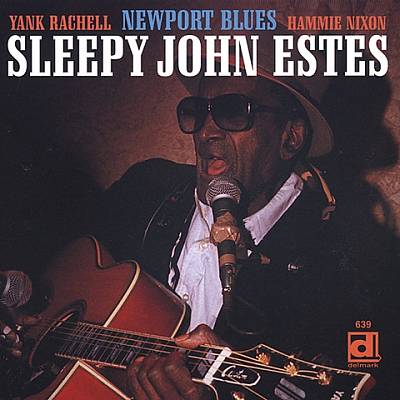
NEWPORT BLUES
Delmark
July 1964
Trois jours après être apparu sur la scène du festival de Newport, John figure dans cette séance impromptue avec Hammie Nixon et Yank Rachell qui est restée inédite jusqu'en 2002. Depuis sa redécouverte en 1962, "Sleepy" John Estes a gravé plusieurs albums dans le même ton pour Delmark. Celui-ci n'échappe pas à la règle : plutôt sympathique mais assez peu original.
Three days after appearing on stage at the Newport Festival, John appears in this improvised session with Hammie Nixon and Yank Rachell which remained unpublished until 2002. Since his rediscovery in 1962, "Sleepy" John Estes has made several albums in the same tone for Delmark. This one is no exception to the rule rather nice but not very original.
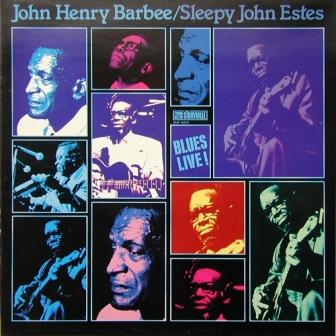
BLUES LIVE
Storyville
October 1964
Ce disque est issu de la représentation danoise (Folk Club de Copenhague) de l'American Folk Blues Festival. "Sleepy" John Estes et John Henry Barbee se partagent le disque. Estes reprend ses titres habituels : "Divin' duck blues", "Stop that thing", "I'd been well warned". On note une entrainante reprise de "Bottle up and go" de Tommy Mac Clennan.
This album comes from the danish representation (Copenhagen Folk Club) of American Folk Blues Festival. It is shared between "Sleepy" John Estes and John Henry Barbee. Estes sings his usual titles : "Divin' duck blues", "Stop that thing", "I'd been well warned". There is a catchy cover of "Bottle up and go" of Tommy Mac Clennan.
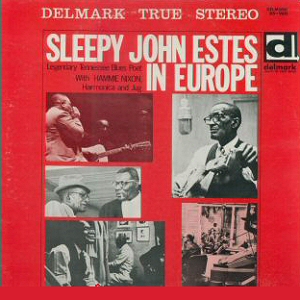

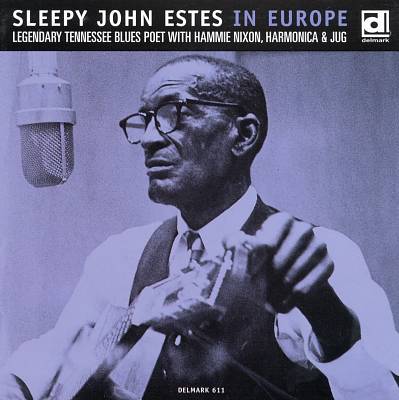
IN EUROPE
Delmark
October 1964
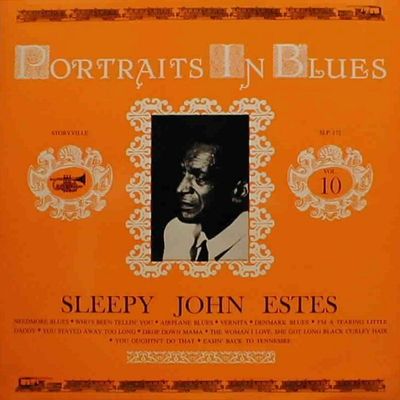

PORTRAITS IN BLUES vol.10
Storyville
October 1964


AMERICAN FOLK BLUES FESTIVAL
L+R
Fontana
October 1964
Dans la foulée de sa redécouverte en 1962 et de sa participation au festival folk de Newport, "Sleepy" John Estes est invité à participer à la tournée de l'American Folk Blues Festival de 1964. C'est la première fois qu'il se rend en Europe. Sa prestation y est épatante malheureusement on ne retrouve qu'un seul de ses titres sur le disque retraçant cette tournée : le rapide et dansant "I'm a tearing little daddy".
In the wake of his rediscovery in 1962 and his participation at Newport Folk Festival, "Sleepy" John Estes is invited to tour with the American Folk Blues Festival. This is the first time he tours in Europe. His performance is stunning, unfortunately we find only one of his titles on the album depicting this tour : the quick and dancing "I'm a tearing little daddy".

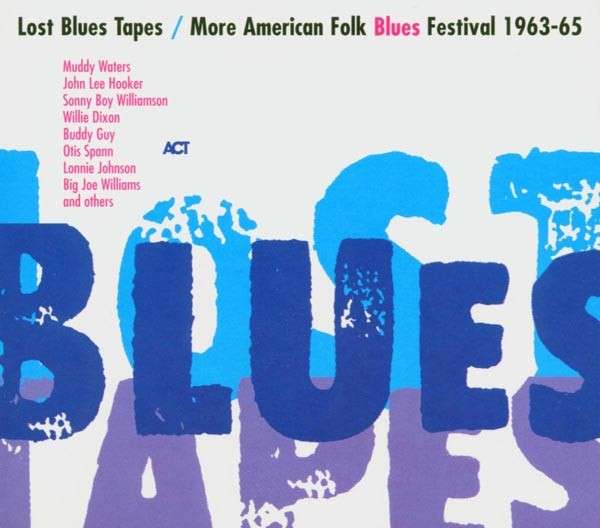
LOST BLUES TAPES : MORE AMERICAN FOLK BLUES FESTIVAL
ACT
October 1964
Dans ce recueil reprenant du matériel inédit issu des tournées de l'American Folk Blues Festival des années 1963, 1964 et 1965, on retrouve un superbe morceau de "Sleepy" John Estes intitulé "You best friend's gone".
In this collection of unreleased material from different American Folk Blues Festival tour (1963, 1964 and 1965), there is a superb side of "Sleepy" John Estes titled "You best friend's gone".

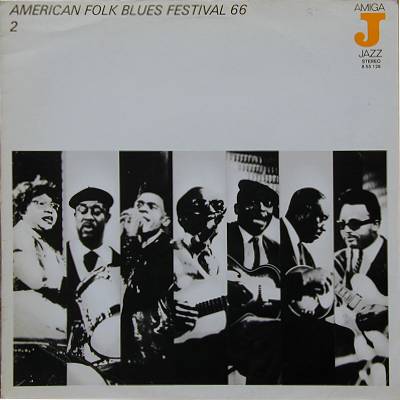
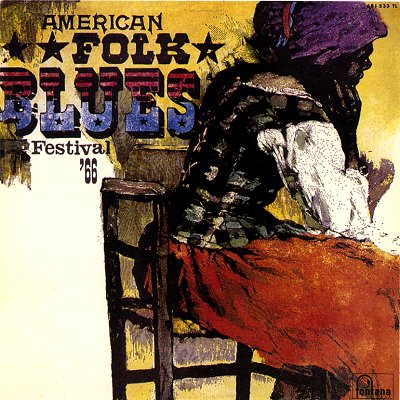

AMERICAN FOLK BLUES FESTIVAL
Amiga
Fontana
L+R
October 1966
Après la tournée de 1964, il participe à nouveau à l'American Folk Blues Festival deux ans plus tard. Dans la version éditée par Amiga (LP et CD), deux morceaux de "Sleepy" John Estes sont proposés : "You shouldn't do it" et "Yellow jam". On notera que les éditions ultérieures (Fontana et L+R) n'ont retenu que le premier morceau (car "Yellow jam" est, parfois, attribué à Yank Rachell).
After the 1964 tour, he participated again at the American Folk Blues Festival two years later. In the version edited by Amiga (LP and CD), two tracks of "Sleepy" John Estes are available : "You shouldn't do it" and "Yellow jam". Note that subsequent editions (Fontana and L+R) retained only the first song (for "Yellow jam" is sometimes attributed to Yank Rachell).
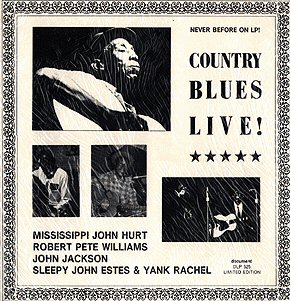
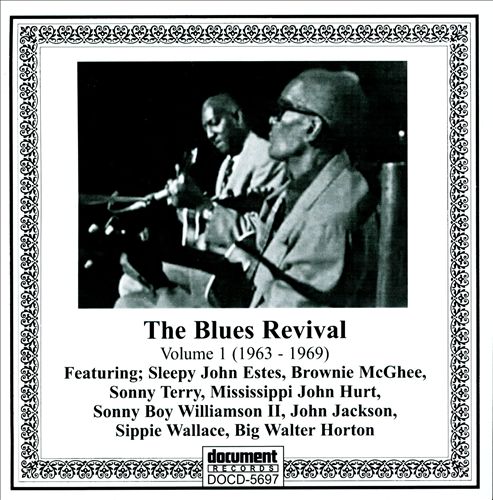
COUNTRY BLUES LIVE
Document
THE BLUES REVIVAL vol.1
Document
October 1966
Trois bons morceaux figurent sur ce recueil (en fait 3 sur le LP mais seulement 2 sur la réédition CD) : "Mail man blues", "80 highway" et "I'm a tearing little daddy". John y est accompagné par son compagnon Yank Rachell à la mandoline.
Three good tracks on this collection (actually 3 on the LP but only 2 on CD reissue) : "Mail man blues", "80 highway" and "I'm a tearing little daddy". John is accompanied there by his companion Yank Rachell on mandolin.
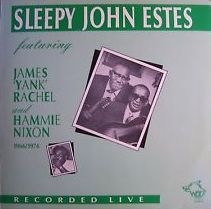
RECORDED LIVE
Wolf
October 1966 - March 1974
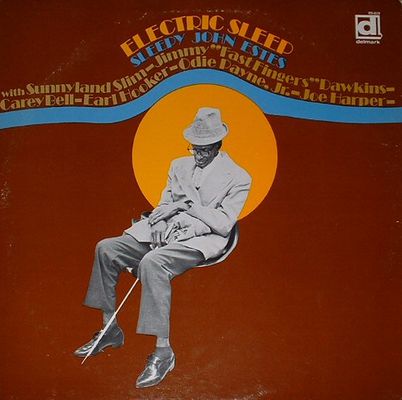
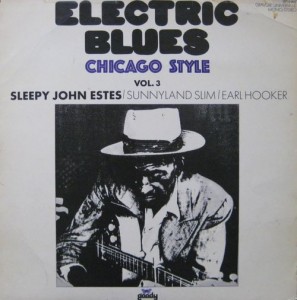
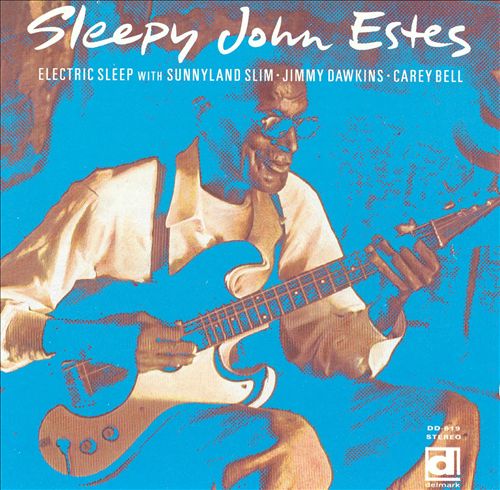
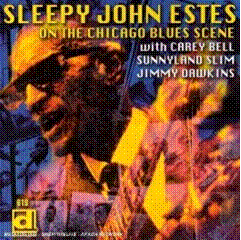
ELECTRIC SLEEP
Delmark
ELECTRIC BLUES CHICAGO STYLE vol.3
Goody
ON THE CHICAGO BLUES SCENE
Delmark
December 1968
Avec cet album, Robert Koester eut l'idée de placer "Sleepy" John Estes dans un contexte Chicago Blues électrique. Le résultat est parfois inégal malgré quelques bons moments : "Everybody's got to change sometime", "If the river was whiskey", "Newport blues", "Walking down Beale Street", "Drop down mama". A l'époque, l'album déplut fortement aux fans de "Sleepy" John Estes. Aujourd'hui, il s'avère intéressant de le redécouvrir. Autour de John, on trouve des habitués de la scène de Chicago : Carey Bell (harmonica et basse), Sunnyland Slim (piano), Jimmy Dawkins (guitare), Earl Hooker (basse), Joe Harper (basse), Odie Payne (batterie).
With this album, Robert Koester came up with the idea of placing "Sleepy" John Estes in an electric Chicago Blues context. The result is sometimes uneven despite some good moments : "Everybody's got to change sometime", "If the river was whiskey", "Newport blues", "Walking down Beale Street", "Drop down mama". At the time, the album strongly displeased "Sleepy" John Estes fans. Today, it seems interesting to rediscover it. Around John, we find regulars Chicago sidemen : Carey Bell (harmonica and bass), Sunnyland Slim (piano), Jimmy Dawkins (guitar), Earl Hooker (bass), Joe Harper (bass), Odie Payne (drums).
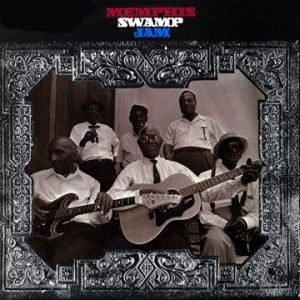

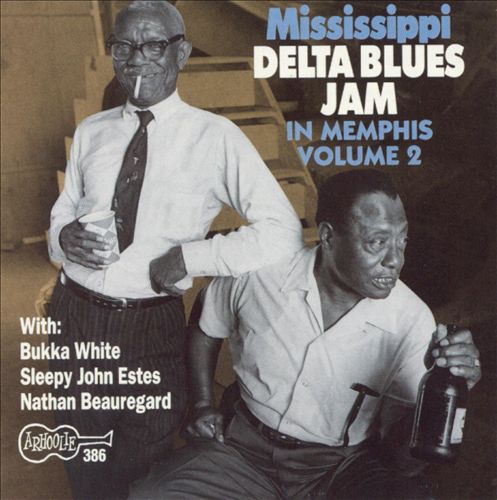
MEMPHIS SWAMP JAM
Blue Thumb
KINGS OF THE COUNTRY BLUES vol.1
Arhoolie
MISSISSIPPI DELTA BLUES JAM vol.2
Arhoolie
June 1969
Enregistrées en marge du Memphis Blues Festival de juin 1969, ces séances ont été supervisées par Chris Strachwitz. John figure sur quatre morceaux de très bonne facture. On signalera, en particulier, une nouveauté "President Kennedy stayed away too long" une reflexion sur l'assassinat du président américain. Pour une fois, John n'est pas accompagné par ses amis de Brownsville mais par de jeunes musiciens : Tommy Garry (harmonica) et Mike Stewart (guitare).
Recorded apart of the Memphis Blues Festival in june 1969, these sessions were supervised by Chris Strachwitz. John appears on four very good tracks. We note, in particular, the new "President Kennedy stayed away too long" about the president's assassination. For once, John is not accompanied by his Brownsville friends but by young musicians : Tommy Garry (harmonica) and Mike Stewart (guitar).

THE MEMPHIS BLUES AGAIN vol.2
Adelphi
June 1970
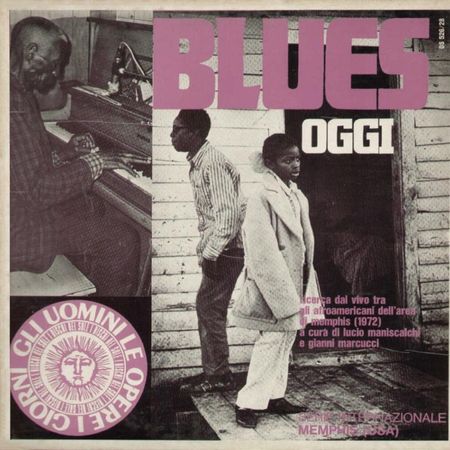
BLUES OGGI
I Dischi del Sole
December 1972

MEMPHIS BLUES CARAVAN vol. 1
Memphis Archives
March 1974

COUNTRY BLUES FESTIVALS : SOUTH ILLINOIS THE EARLY 70'S
Blue Eye (only on mp3)
March 1974
Trois morceaux joués sur un festival avec son comparse Hammie Nixon et rassemblés par Gérard Herzhaft.
Three tracks played during a festival with his sidekick Hammie Nixon and brought together by Gérard Herzhaft.
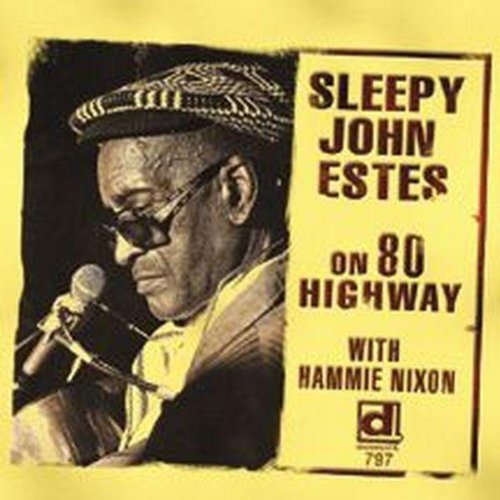
ON 80 HIGHWAY
Delmark
July 1974
Gravé en une seule journée à Chicago (au Sound Studio), ce disque n'est sorti qu'en 2008. "Sleepy" John Estes est déjà largement septuagénaire. Il se prépare, pourtant, à une tournée au Japon avec son ami Hammie Nixon (présent ici au chant, à l'harmonica et au kazoo) quelques mois plus tard. Sa voix n'est plus aussi expressive qu'autrefois mais son chant reste très correct. Le répertoire est, ici, un peu plus large qu'à l'accoutumée avec une reprise de "I'll be glad when you're dead", des gospels ("Holy spirit") et deux versions de son "President Kennedy".
Cut in one day in Chicago (at Sound Studio), this record was only released in 2008. "Sleepy" John Estes is already septuagenarian. He is prepared, however, to a Japan tour with his friend Hammie Nixon (present here on vocals, harmonica and kazoo) a few months later. His voice is not as expressive as before but her singing remains very correct. Tracklisting is here a little broader than usual with a cover of "I'll be glad when you're dead", gospel songs ("Holy spirit") and two versions of "President Kennedy".

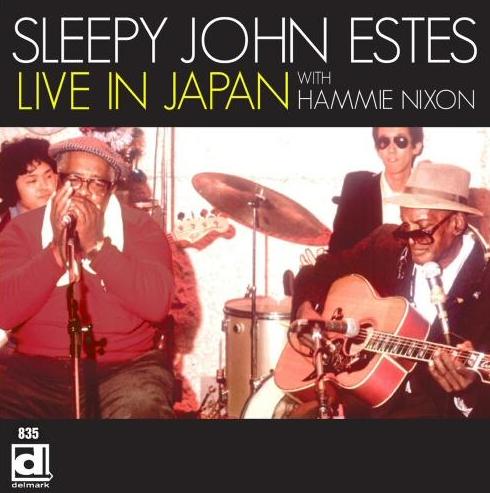
BLUES LIVE : SLEEPY AND HAMMIE MEET JAPANESE PEOPLE
Trio
LIVE IN JAPAN
Delmark
November 1974
Cette tournée au Japon de "Sleepy" John Estes et d'Hammie Nixon fut vraiment triomphale. Les deux artistes eurent les honneurs d'une belle reconnaissance pendant celle-ci. A cet égard, il s'agit d'un moment important dans la carrière des deux hommes. Mais, Estes, approchant les 75 ans, fatigué et connaissant des ennuis de santé, se contente ici du minimum. Son accompagnement à la guitare s'avère franchement rudimentaire et son chant bien faible. Heureusement, Hammie Nixon soutient son ami au chant et à divers instruments (harmonica, kazoo, jug) avec conviction. De cette fructueuse tournée au Japon, il n'existait que le LP "Blues live : Sleepy and Hammie meet japanese people" édité par Trio. En 2014, Delmark a proposé un CD rééditant la tournée de 1974 agrémentée de la tournée de 1976 (voir plus bas).
This Japan tour of "Sleepy" John Estes and Hammie Nixon was truly triumphant. Both artists had the honor of a great recognition during this tour. Indeed, it is an important moment in both men careers. But Estes, approaching 75 years old, tired and experiencing health problems, simply do the minimum. His guitar accompaniment is really frankly rudimentary and his voice very weak. Fortunately, Hammie Nixon supports his friend singing and playing various instruments (harmonica, kazoo, jug) with conviction. This successful tour in Japan was immortalized first with "Blues live: Sleepy and Hammie meet japanese people" LP edited by Trio. In 2014, Delmark proposed a CD reissuing the 1974 tour added with 1976 tour (see below).
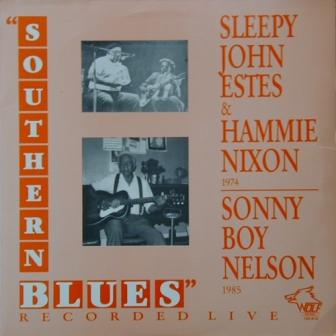
SOUTHERN BLUES
Wolf
1974
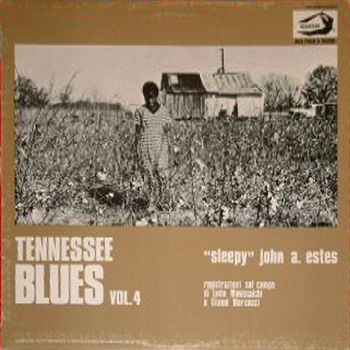
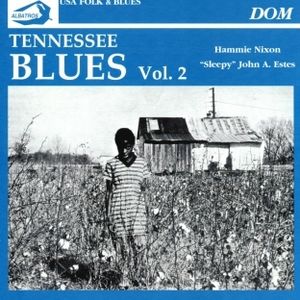
TENNESSEE BLUES vol.4
Albatros
TENNESSEE BLUES vol.2
Dom
March 1976
Lors de séances impromptues, et même improvisées semble t-il, "Sleepy" John Estes est enregistré à la fin de sa vie par l'italien Gianni Marcucci (ce dernier l'avait déjà capté en 1972 dans le microsillon "Blues oggi"). L'ambiance est chaude et relachée mais le vieux bluesman n'a plus ses moyens d'antan et le disque s'en ressent fortement. Le témoignage d'un artiste si important en fin de carrière reste, malgré tout, un moment émouvant. Ce n'est donc pas un disque indispensable : il faut le conseiller aux amateurs inconditionnels de "Sleepy" John Estes. On notera qu'il joue seul à la guitare sur tous les morceaux.
During improvised sessions, "Sleepy" John Estes is recorded at the end of his life by Italian Gianni Marcucci (the latter had already captured him in 1972 for "Blues oggi" LP). The atmosphere is warm and relax but the old bluesman no longer has his old resources. The testimony of an important artist in his last days remains nevertheless a touching moment. It is therefore not an essential album : it is advisable to "Sleepy" John Estes die-hard fans. Note that he is alone on guitar on all songs.
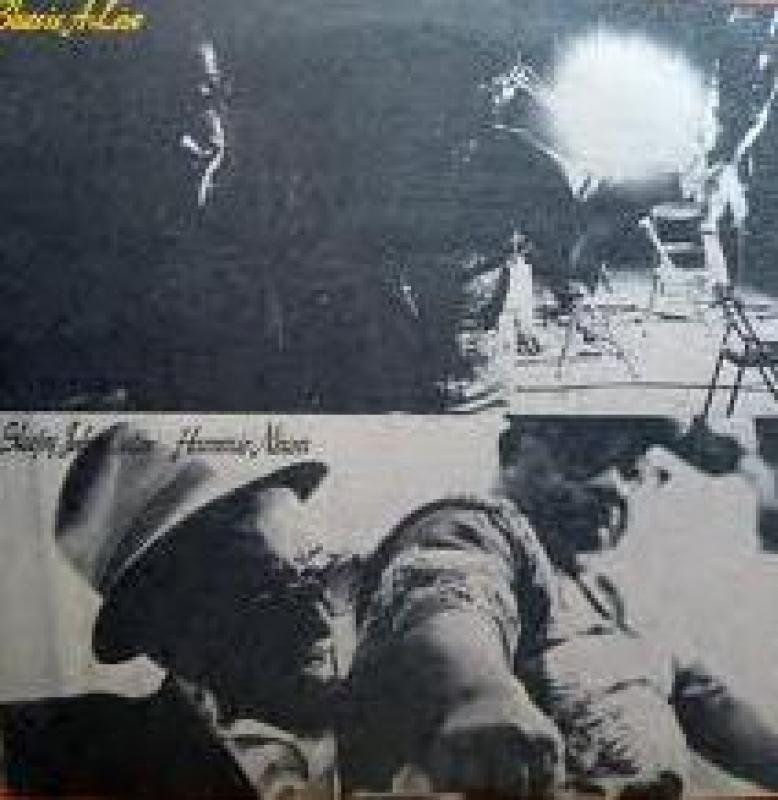

BLUES IS A-LIVE
Trio
LIVE IN JAPAN
Delmark
December 1976
Lors de leur deuxième passage au Japon à la fin de l'année 1976, "Sleepy" John Estes et Hammie Nixon furent enregistrés à plusieurs occasions à Tokyo et à Kyoto. Ces performances donnèrent lieu à un microsillon édité par Trio. L'ensemble du matériel a été réédité par Delmark (un CD qui reprend, en fait, les deux microsillons édités par Trio en 1974 et 1976) en 2014. Le disque a, bien évidemment, une valeur historique certaine. Cependant, John est loin de ses capacités d'autrefois.
At their second appearance in Japan at the end of 1976, "Sleepy" John Estes and Hammie Nixon were recorded on several occasions in Tokyo and Kyoto. This performance gave birth to a Trio LP. All material has been reissued by Delmark (a CD that contains, in fact, the two LPs edited by Trio in 1974 and 1976) in 2014. The album have, of course, a certain historical value. However, John is far from his old musical capacities.